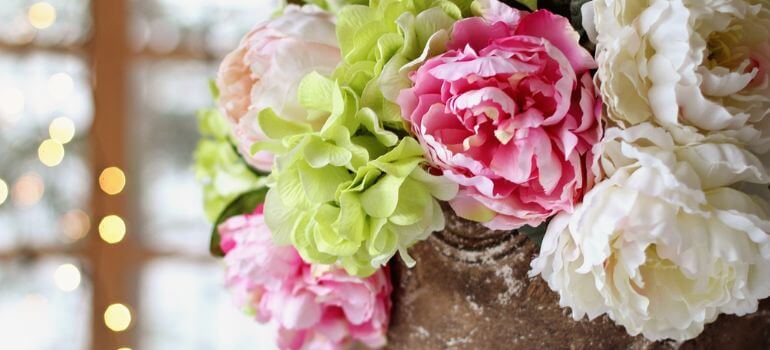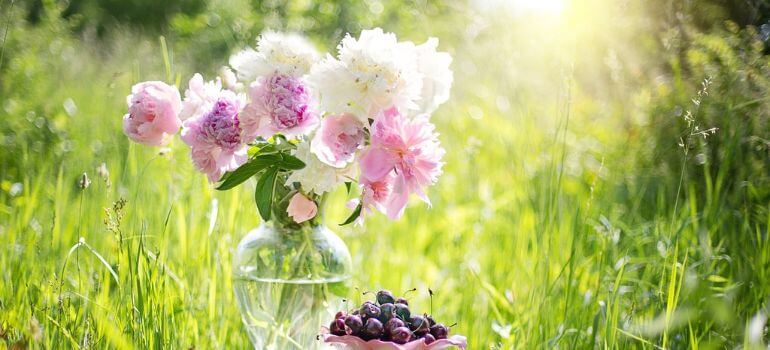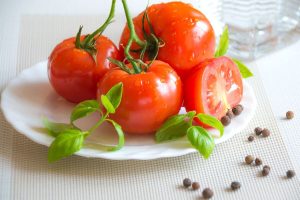Gardening enthusiasts often find themselves torn between the classic elegance of peonies and the versatile beauty of hydrangeas. In this delightful comparison, we’ll explore the unique features, growing conditions, and cultural significance of these two floral wonders.
Introduction
Gardening is a timeless passion, and selecting the right flowers is crucial for a vibrant and picturesque garden. Among the myriad choices, peonies and hydrangeas stand out as perennial favorites, each with its distinct charm. Let’s delve into the world of these enchanting blooms.
Peonies: The Timeless Elegance
Peonies, with their lush petals and captivating fragrance, epitomize timeless elegance. Available in a spectrum of colors, from delicate pinks to bold crimsons, these flowers make a stunning addition to any garden. Cultivating peonies requires patience, as they thrive in well-drained soil and demand adequate sunlight.
Hydrangeas: The Versatile Beauties
Hydrangeas, on the other hand, boast unparalleled versatility. With various types such as lacecap, mophead, and panicle, they offer a range of shapes and sizes. Hydrangeas are known for their ability to adapt to different soil conditions, making them a favorite among gardeners with varying landscapes.
Appearance and Structure
In a side-by-side comparison, peonies flaunt a compact and bushy structure, adorned with large, layered petals. Hydrangeas, with their distinct mophead or lacecap formations, exhibit a more open and intricate arrangement. Understanding these differences adds depth to your garden design.
Growing and Caring for Peonies and Hydrangeas
Gardening is not just a hobby; it’s a journey of nurturing and watching beautiful blooms unfold. When it comes to peonies and hydrangeas, understanding their unique needs is essential for a thriving garden. Let’s explore the ins and outs of growing and caring for these enchanting flowers.
Planting Peonies: A Patient Gardener’s Delight
Peonies are known for their elegant and timeless beauty, but they demand a bit of patience from the gardener. Here’s a step-by-step guide to ensure your peonies flourish:
1. Choose the Right Location:
- Select a spot with well-drained soil and at least six hours of sunlight.
- Ensure good air circulation to prevent fungal diseases.
2. Prepare the Soil:
- Peonies thrive in slightly acidic to neutral soil with a pH of 6.5 to 7.5.
- Add organic matter, like compost, to enhance soil fertility.
3. Planting Peony Tubers:
- Plant peony tubers in the fall, about 2 inches below the soil surface.
- Space multiple tubers at least 3 feet apart to allow for growth.
4. Watering and Mulching:
- Water peonies regularly, especially during dry spells.
- Apply a layer of mulch in late fall to protect the plant during winter.
5. Supporting Peony Stems:
- As peonies produce large and heavy blooms, use stakes or cages to support the stems.
- Install supports in early spring to avoid damaging emerging shoots.
Hydrangeas: Versatile Beauties with Simple Needs
Hydrangeas offer versatility in terms of types and colors, making them a favorite for diverse garden styles. Here’s how to nurture these beauties:
1. Choosing the Right Variety:
- Understand the different types of hydrangeas, including mophead, lacecap, and panicle.
- Select varieties based on your climate and garden conditions.
2. Optimal Planting Conditions:
- Plant hydrangeas in well-drained soil with a pH ranging from 6 to 7.
- Ensure they receive morning sunlight and afternoon shade.
3. Watering Hydrangeas:
- Keep the soil consistently moist but not waterlogged.
- Water hydrangeas at the base to prevent fungal diseases on the leaves.
4. Pruning for Shape and Size:
- Prune hydrangeas in late winter or early spring before new growth appears.
- Remove dead or weak stems to encourage healthy growth.
5. Changing Hydrangea Colors:
- Adjust soil pH to influence the color of mophead and lacecap hydrangea blooms.
- Acidic soil produces blue blooms, while alkaline soil yields pink blooms.
Common Ground: Caring for Both
While peonies and hydrangeas have unique requirements, there are some common practices to ensure their well-being:
1. Regular Inspection:
- Monitor both plants for signs of pests, diseases, or nutrient deficiencies.
- Take prompt action to address any issues and maintain plant health.
2. Fertilizing:
- Use a balanced fertilizer in spring to support peony and hydrangea growth.
- Avoid excessive nitrogen, as it can lead to lush foliage but fewer blooms.
3. Deadheading Spent Blooms:
- Remove spent blooms to encourage continuous flowering.
- Deadheading redirects energy to new growth and promotes a tidy appearance.
4. Winter Protection:
- Apply a layer of mulch around the base of both plants in late fall.
- Protect them from harsh winter conditions, especially in colder climates.
5. Seasonal Pruning:
- Conduct pruning during the appropriate seasons for each plant.
- Prune peonies in late fall or early spring, while hydrangeas benefit from late winter or early spring pruning.
By following these guidelines, you’ll be well on your way to cultivating a garden filled with the timeless elegance of peonies and the versatile beauty of hydrangeas. Happy gardening!
Embracing the Seasons: Peony and Hydrangea Transformations

Gardening isn’t just about planting; it’s a journey through the seasons, witnessing the ever-changing beauty of your floral companions. Peonies and hydrangeas, each with its unique charm, undergo captivating transformations as the seasons unfold. Let’s explore the enchanting seasonal changes these flowers bring to your garden.
Spring Awakening: Peonies in Bloom
As winter retreats, peonies announce the arrival of spring with their spectacular blooms. This season is a magical time for peony enthusiasts:
1. Eager Anticipation:
- Peony shoots emerge, signaling the end of winter dormancy.
- Gardeners eagerly await the unfolding of those iconic, lush peony buds.
2. Breathtaking Blooms:
- Peony flowers burst open in a symphony of colors.
- Shades of pink, red, white, and even coral paint the garden canvas.
3. Fragrant Bliss:
- The air is filled with the sweet, heady fragrance of peonies.
- These aromatic blooms attract pollinators and delight the senses.
4. Careful Support:
- As the weight of the blossoms increases, providing support to peony stems becomes crucial.
- Gardeners employ stakes or hoops to prevent the stems from bending under the floral bounty.
Summer Splendor: Hydrangeas in Full Glory
As peonies take their bow, hydrangeas step into the spotlight, transforming summer into a vibrant spectacle:
1. Continued Elegance:
- While peonies fade, hydrangeas commence their blooming extravaganza.
- Mophead and lacecap varieties display large, showy flower heads.
2. Colorful Palette:
- Hydrangea blooms showcase a range of hues influenced by soil pH.
- From deep blues to pinks and purples, the garden becomes a living color palette.
3. Enduring Beauty:
- Hydrangeas continue to bloom throughout the summer, providing a long-lasting display.
- Regular deadheading encourages new blooms and maintains the plant’s aesthetic appeal.
4. Adaptable Companionship:
- Hydrangeas adapt to the changing conditions of summer, thriving in both sun and partial shade.
- Their ability to withstand heat makes them a resilient choice for various climates.
Fall Transformation: A Dual Show
As the seasons transition, both peonies and hydrangeas undergo changes that add a unique charm to the fall garden:
1. Peony Farewell:
- Peonies gracefully retire for the season, shedding their leaves.
- Foliage turns shades of yellow and red, offering a final burst of color.
2. Hydrangea Persistence:
- Hydrangeas, particularly panicle varieties, maintain their blooms into the fall.
- Dried hydrangea flowers can be preserved for decorative purposes.
3. Garden Cleanup:
- Fall is the time for gardeners to tidy up, removing spent foliage and preparing plants for winter.
- Mulching around the base of both peonies and hydrangeas provides winter protection.
4. Winter Preparations:
- Both plants benefit from a layer of mulch to insulate the soil and protect the roots during the winter freeze.
- Pruning hydrangeas in late fall ensures a tidy appearance and stimulates new growth for the next season.
Dormant Winter: A Time of Rest
As winter settles in, both peonies and hydrangeas enter a dormant phase, preparing for the cycle to begin anew:
1. Resting Period:
- Peonies and hydrangeas withdraw into a state of dormancy.
- The focus shifts to maintaining soil health and protecting plants from harsh winter conditions.
2. Gardener’s Reflection:
- Winter offers a time for gardeners to reflect on the successes of the past season and plan for the future.
- It’s an opportunity to envision new arrangements and varieties for the upcoming spring.
3. Anticipation for Spring:
- Gardeners eagerly await the return of warmer weather, heralding the emergence of new shoots and the promise of another blooming season.
- Planning and preparation for the upcoming gardening year begin in earnest.
Embracing the seasonal changes of peonies and hydrangeas adds a dynamic and ever-evolving beauty to your garden. Each stage of growth, from the first delicate peony bud to the persistent hydrangea bloom in the fall, contributes to the tapestry of colors and fragrances that make your garden a year-round delight.
Crafting Timeless Landscapes: Peonies and Hydrangeas in Harmony
Landscaping is an art, and when it comes to creating an enchanting garden, peonies and hydrangeas stand as ideal companions. Their unique characteristics lend themselves to diverse landscaping designs that elevate the beauty of any outdoor space. Let’s explore creative ideas for landscaping with peonies and hydrangeas.
Classic Elegance: Peonies as Focal Points
1. Floral Borders:
- Planting peonies along the borders of your garden adds a touch of classic elegance.
- Choose a mix of peony varieties to create a diverse display of colors and bloom sizes.
2. Garden Path Accents:
- Line garden paths with peonies to create a stunning visual effect.
- Opt for lighter-colored peonies to brighten shaded pathways and darker hues for sunlit areas.
3. Mixed Perennial Beds:
- Integrate peonies into mixed perennial beds for a dynamic and ever-changing landscape.
- Pair them with companions like irises and daylilies for a harmonious blend.
4. Cottage Garden Charm:
- Create a cottage garden aesthetic by combining peonies with other cottage favorites like roses and daisies.
- Allow peonies to take center stage with their lush foliage and captivating blooms.
Versatility Unleashed: Hydrangeas in Varied Roles
1. Bordering Hedges:
- Use hydrangeas as bordering hedges to define garden spaces.
- Their dense foliage and varied bloom colors add structure and visual interest.
2. Color-Coordinated Beds:
- Plan beds where hydrangeas take center stage with their color-changing blooms.
- Coordinate hydrangea colors with other elements in your garden for a cohesive look.
3. Understated Foundations:
- Plant hydrangeas near the foundation of your home for a subtle yet impactful landscaping choice.
- Their adaptability to partial shade makes them suitable for this role.
4. Container Gardening:
- Embrace container gardening by placing potted hydrangeas strategically around your outdoor space.
- Experiment with different pot sizes and varieties for a dynamic visual effect.
A Symphony of Beauty: Combining Peonies and Hydrangeas
1. Contrasting Textures:
- Combine the bold, bushy structure of peonies with the more open and textured hydrangea blooms.
- This contrast adds visual interest and depth to your garden design.
2. Strategic Groupings:
- Group peonies and hydrangeas together in clusters for a focal point that captures attention.
- Consider planting taller hydrangea varieties behind peonies to create layered heights.
3. Seasonal Transitions:
- Plan for seasonal transitions by selecting peony varieties that bloom earlier in the spring, followed by hydrangeas that take center stage in the summer and fall.
- This ensures a continuous display of color and texture.
4. Water Features Enhancement:
- Place peonies and hydrangeas near water features like ponds or fountains.
- The reflection of these blooms in the water adds a touch of romance and tranquility.
Maintenance Tips for a Flourishing Landscape
1. Pruning Practices:
- Follow proper pruning practices for both peonies and hydrangeas to maintain their shape and encourage healthy growth.
- Prune peonies in late fall or early spring, while hydrangeas benefit from pruning in late winter or early spring.
2. Mulching Magic:
- Apply a layer of mulch around peonies and hydrangeas to retain moisture, suppress weeds, and insulate the soil.
- Mulching also enhances the aesthetic appeal of your landscaping.
3. Regular Feeding:
- Feed peonies and hydrangeas with a balanced fertilizer in the spring to support their growth and blooming.
- Avoid excessive use of nitrogen, which can lead to lush foliage but fewer blooms.
4. Watering Wisdom:
- Water both plants consistently, ensuring they receive adequate moisture.
- Be mindful of overwatering, especially for hydrangeas, as they prefer consistently moist but not waterlogged soil.
Creating a landscape with peonies and hydrangeas is about weaving a tapestry of colors, textures, and fragrances that evolve with the seasons. Whether you opt for the timeless elegance of peonies or the versatile beauty of hydrangeas, your garden will become a masterpiece that captivates the senses.
Navigating Challenges: Growing Healthy Peonies and Hydrangeas
While peonies and hydrangeas are beloved for their beauty and versatility, cultivating these enchanting blooms comes with its set of challenges. From diseases to pests, being aware of potential issues is crucial for maintaining the health and vibrancy of your peonies and hydrangeas. Let’s explore common challenges and effective solutions for growing these garden treasures.
Common Challenges for Peonies:
1. Botrytis Blight:
- Issue: Peonies are susceptible to Botrytis blight, a fungal disease that manifests as grayish mold on buds and leaves.
- Solution: Improve air circulation by spacing plants adequately. Remove and dispose of infected plant material. Apply fungicides preventatively in spring.
2. Ant Infestations:
- Issue: Ants are attracted to the sweet nectar on peony buds, causing them to remain closed.
- Solution: While ants don’t harm peonies, deterring them with natural remedies like diatomaceous earth or sticky barriers can help buds open fully.
3. Supporting Heavy Blooms:
- Issue: The weight of peony blooms can cause stems to bend or break.
- Solution: Use stakes or hoops to support peony stems early in the season. Install them before the buds fully develop to avoid damaging emerging shoots.
4. Reddish Shoots and Lack of Blooms:
- Issue: Peonies may exhibit reddish shoots without producing blooms.
- Solution: Ensure peonies receive sufficient sunlight. Reddish shoots can result from inadequate light exposure. Consider transplanting to a sunnier location if necessary.
Common Challenges for Hydrangeas:
1. Powdery Mildew:
- Issue: Hydrangeas can suffer from powdery mildew, a fungal disease that appears as a powdery white substance on leaves.
- Solution: Improve air circulation, prune for better ventilation, and apply fungicides if necessary. Water at the base to avoid wetting the foliage.
2. Inconsistent Blooms:
- Issue: Factors like incorrect pruning or extreme weather conditions can lead to inconsistent blooming.
- Solution: Follow proper pruning practices based on the hydrangea type. Protect plants during extreme weather and provide consistent care for reliable blooming.
3. Chlorosis (Yellowing Leaves):
- Issue: Yellowing leaves indicate chlorosis, often caused by nutrient deficiencies or improper soil pH.
- Solution: Amend soil with the appropriate nutrients and adjust pH if necessary. Fertilize hydrangeas with a balanced fertilizer to address nutrient deficiencies.
4. Wilting in Heat:
- Issue: Hydrangeas may wilt in hot weather, even if the soil is adequately moist.
- Solution: Provide partial shade during the hottest part of the day. Mulch around the base to retain soil moisture and reduce heat stress.
Strategies for Overcoming Challenges:
1. Vigilant Monitoring:
- Regularly inspect peonies and hydrangeas for signs of pests, diseases, or nutrient deficiencies.
- Early detection allows for prompt intervention and minimizes the impact of potential issues.
2. Proactive Pruning:
- Follow recommended pruning practices for each plant.
- Prune peonies in late fall or early spring and hydrangeas in late winter or early spring, depending on the type.
3. Optimal Watering:
- Ensure both plants receive consistent, adequate watering without waterlogging the soil.
- Mulching helps retain moisture and prevents soil compaction.
4. Soil Improvement:
- Test soil regularly to monitor pH levels and nutrient content.
- Amend soil based on test results to create an optimal growing environment for peonies and hydrangeas.
Growing peonies and hydrangeas can be a rewarding experience with the right care and attention. By addressing challenges promptly and implementing preventive measures, you’ll enjoy a flourishing garden filled with the timeless beauty of peonies and the versatile charm of hydrangeas.
Popularity and Demand
Understanding the market trends for peonies and hydrangeas provides valuable insights for both hobbyist gardeners and commercial cultivators. Peonies often witness high demand in the floral industry, especially during the wedding season. Hydrangeas, with their longer blooming period, cater to a broader market, including home decorators and event planners.
Peony vs. Hydrangea: Which is Right for You?
Choosing between peonies and hydrangeas depends on your preferences and gardening goals. If you seek classic beauty and a burst of fragrance, peonies might be your perfect match. On the other hand, if you value versatility and a more extended blooming season, hydrangeas offer an excellent choice.
Real Stories: Gardener Experiences
Let’s hear from gardeners who have experienced the joy of cultivating both peonies and hydrangeas. Sarah from Michigan shares, “Peonies bring a nostalgic charm to my garden, but hydrangeas add that extra pop of color throughout the summer. It’s the perfect combination.” These real stories provide valuable insights for fellow gardening enthusiasts.
Bridal Bouquets and Floral Arrangements
The allure of peonies and hydrangeas extends beyond the garden. Brides often choose these flowers for their bridal bouquets, creating a romantic and elegant atmosphere. The combination of peonies’ softness and hydrangeas’ volume results in stunning floral arrangements that captivate hearts.
DIY Tips and Ideas
For the hands-on gardeners, here are some creative DIY projects involving peonies and hydrangeas. From crafting personalized floral wreaths to designing enchanting centerpieces, these ideas add a personal touch to your space. Unleash your creativity and let these blooms inspire your next project.
Conclusion
In the peony vs. hydrangea showdown, there’s no clear winner, as both bring unique qualities to the table. Whether you opt for the timeless elegance of peonies or the versatile beauty of hydrangeas, your garden is sure to flourish with color, fragrance, and character.
FAQs:
Yes, they can. Both flowers complement each other well, creating a visually appealing garden.
Peonies and hydrangeas have similar maintenance needs, with proper care ensuring healthy growth for both.
Yes, you can influence the color of hydrangea blooms by adjusting the soil pH. Acidic soil tends to produce blue blooms, while alkaline soil yields pink blooms.
While hydrangeas adapt well to containers, peonies are better suited for in-ground planting due to their deep root system.
Yes, both peonies and hydrangeas attract pollinators, enhancing the biodiversity of your garden.



